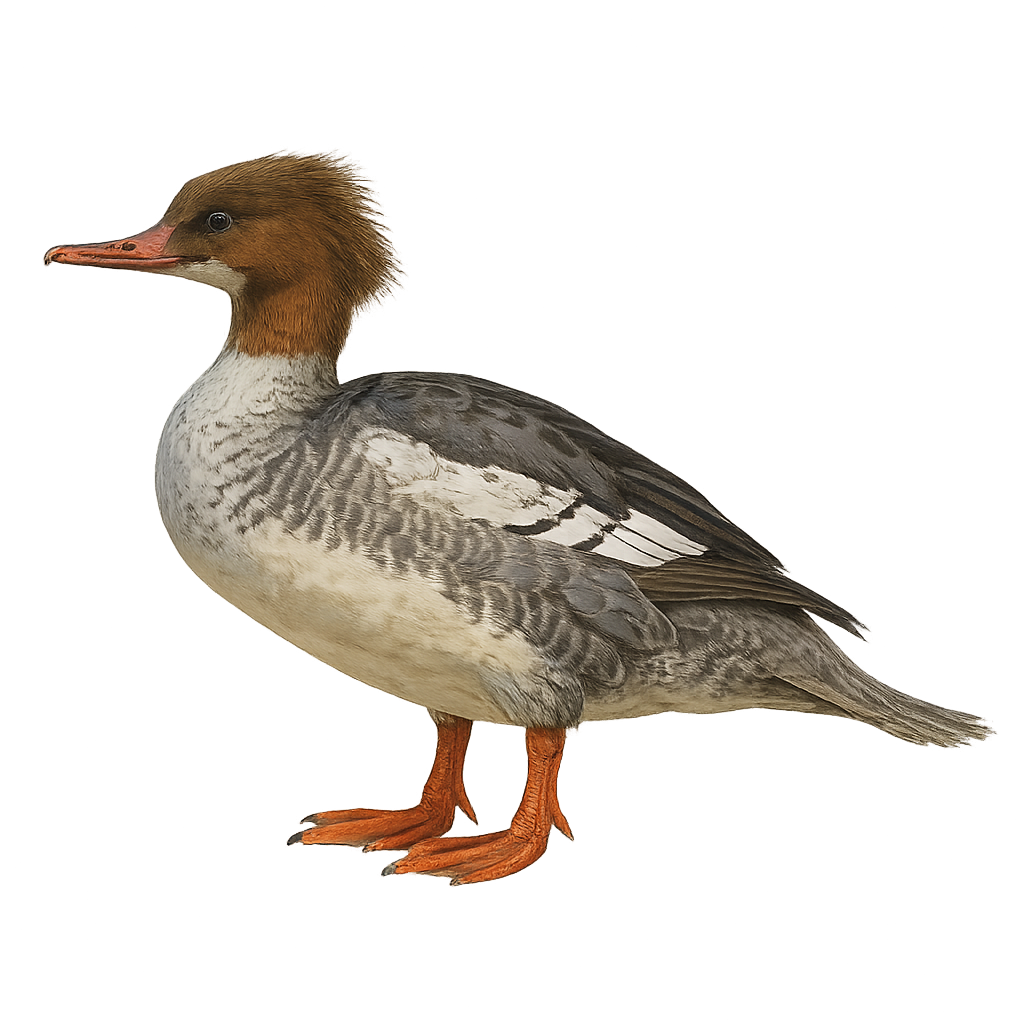Your wildlife photography guide.
Explore the common merganser in detail, study its behavior, prepare your shots.
Where to observe and photograph the common merganser in the wild
Learn where and when to spot the common merganser in the wild, how to identify the species based on distinctive features, and what natural environments it inhabits. The WildlifePhotographer app offers tailored photography tips that reflect the common merganser’s behavior, helping you capture better wildlife images. Explore the full species profile for key information including description, habitat, active periods, and approach techniques.
Common Merganser
Scientific name: Mergus merganser

IUCN Status: Least Concern
Family: ANATIDAE
Group: Birds
Sensitivity to human approach: Suspicious
Minimum approach distance: 30 m
Courtship display: March to April
Incubation: 30–32 jours
Hatchings: April to May
Habitat:
Clear-water rivers and lakes in forested areas
Activity period :
Primarily active during the day, with peak activity in the morning and late afternoon.
Identification and description:
The Common Merganser is a large diving duck measuring between 58 and 71 cm in length, with a wingspan of 82 to 97 cm. The male features a dark green iridescent head, white body, and black back, while the female has a reddish-brown crested head and light gray body. This duck is characterized by its long, slender red bill with serrated edges, ideal for catching slippery fish. It inhabits clear-water rivers and lakes in forested regions of Europe, Asia, and North America. Nesting in tree cavities or cliff crevices, it lays between 6 and 17 eggs per season. Its diet mainly consists of fish, but also includes amphibians, crustaceans, and aquatic insects. Although listed as Least Concern, habitat loss can locally impact its populations.
Recommended lens:
400 mm – adjust based on distance, desired framing (portrait or habitat), and approach conditions.
Photography tips:
Use a telephoto lens to photograph the Common Merganser without disturbing it. Opt for early morning or late afternoon for soft lighting. Be discreet and wait near fishing areas to capture natural behaviors.
The WildlifePhotographer App is coming soon!
Be the first to explore the best nature spots, track rutting seasons, log your observations, and observe more wildlife.
Already 1 432 wildlife lovers subscribed worldwide

